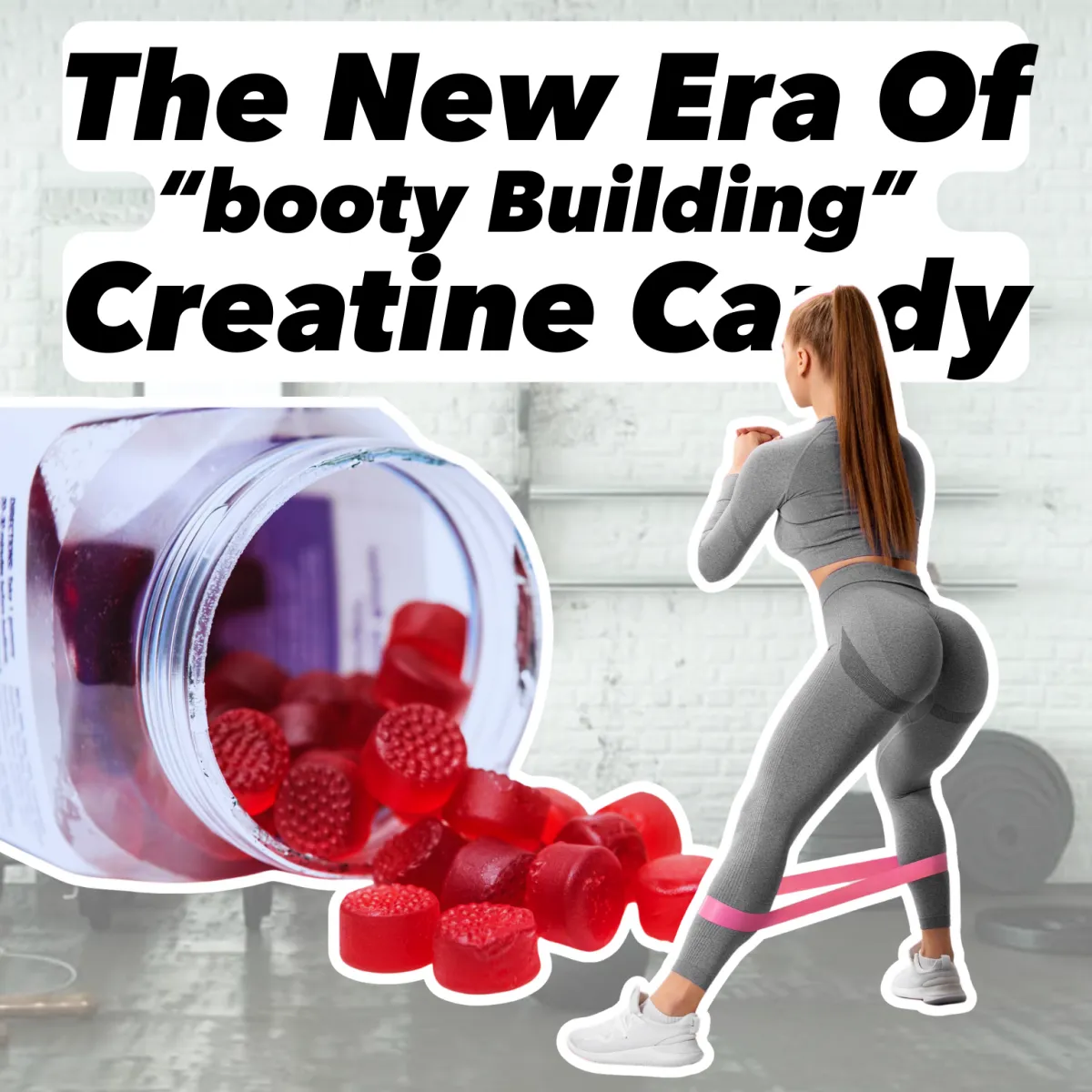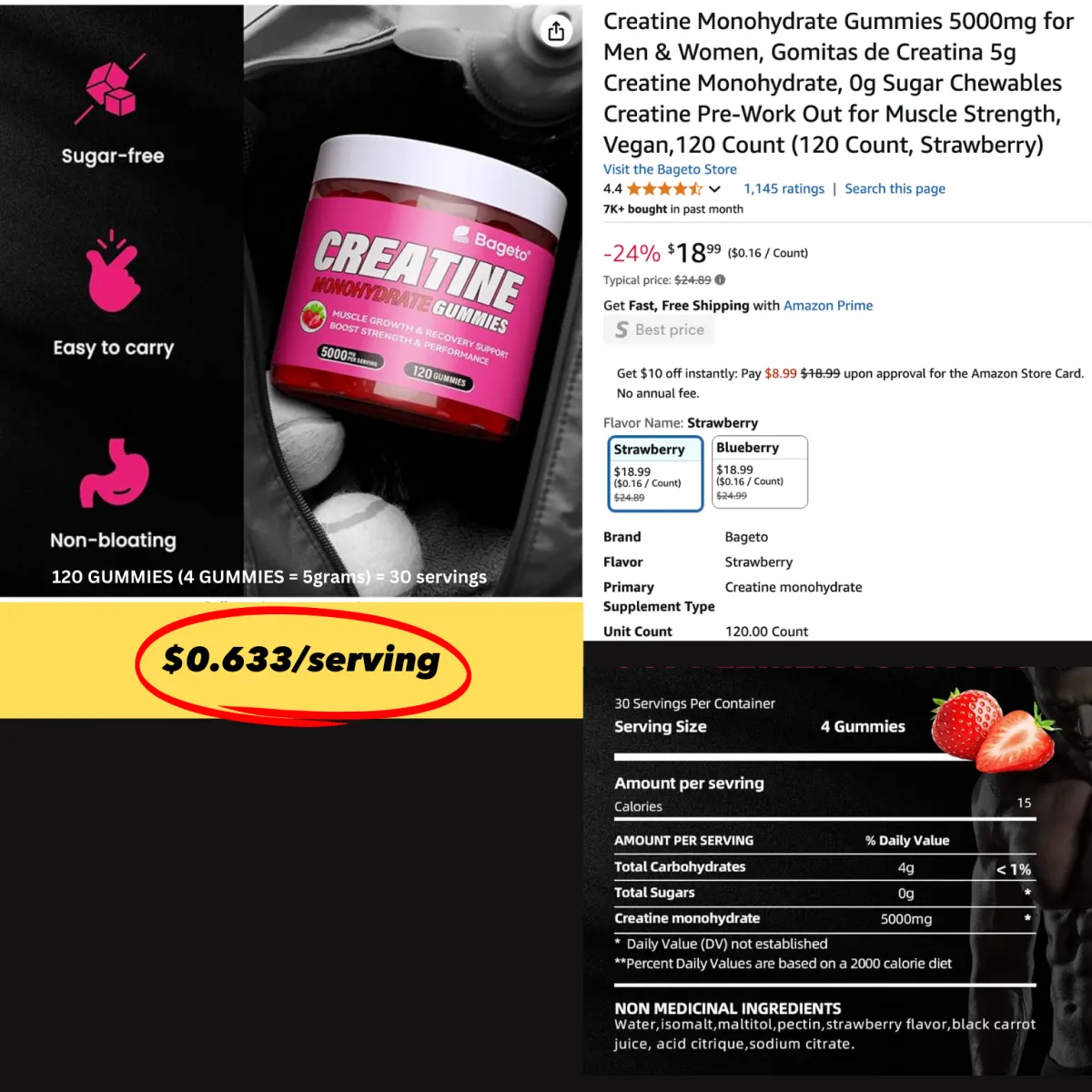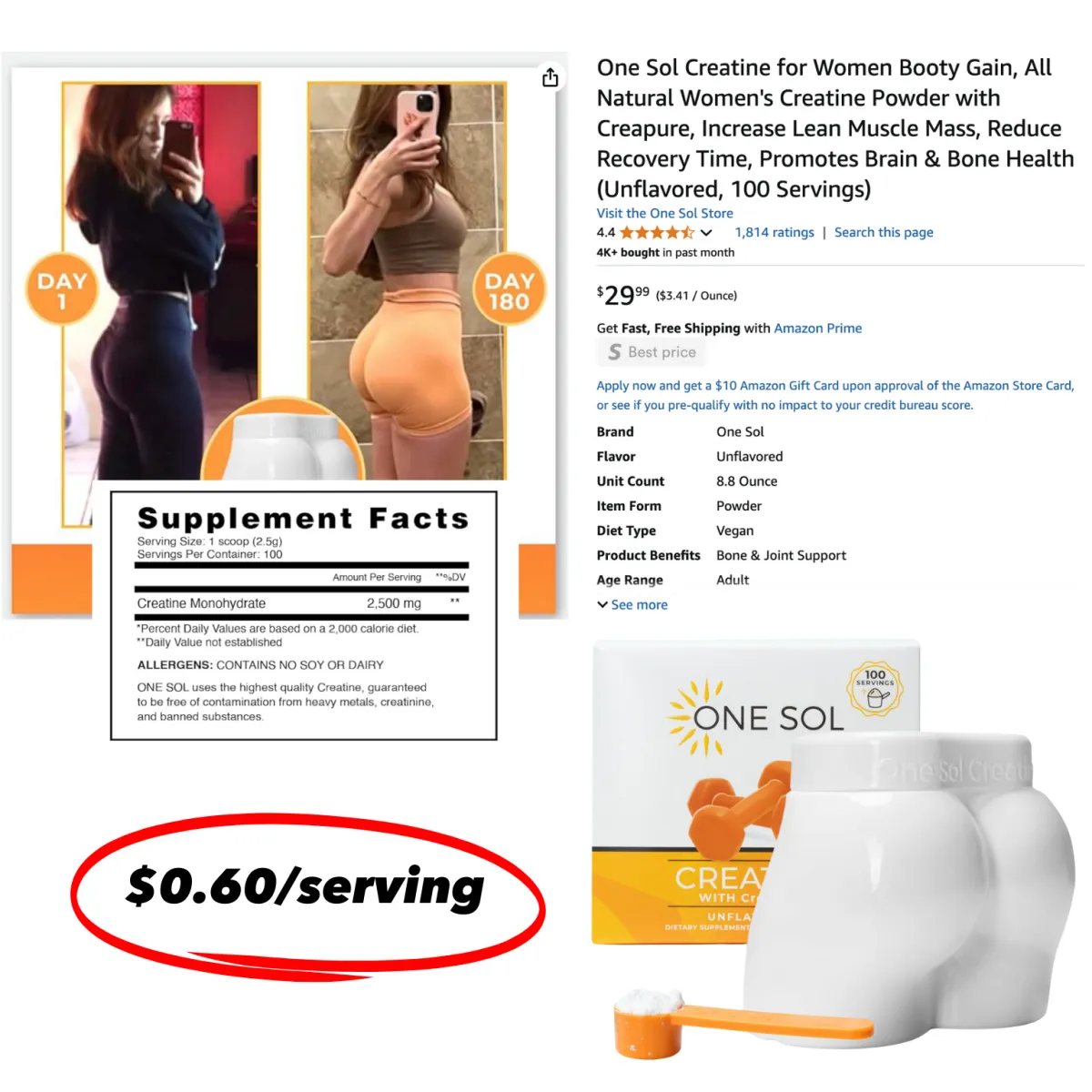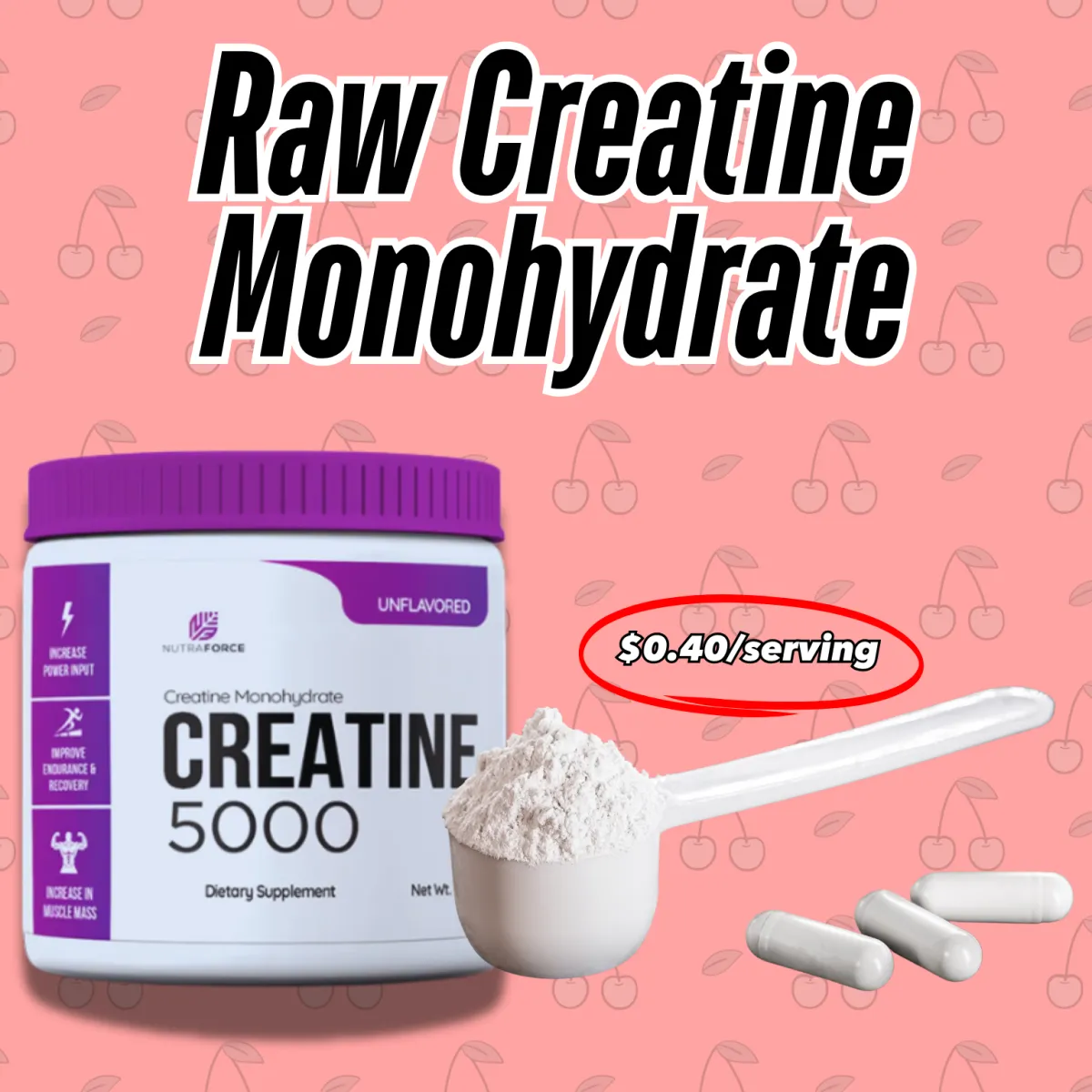

The Evolution of Creatine Monohydrate:
From Hardcore Muscle Fuel to Booty-Building Gummies
The supplement industry has always been a landscape of evolution, innovation, and sometimes, repackaging the same product with a new twist. One of the best examples of this is creatine monohydrate—a supplement that has stood the test of time, backed by decades of scientific research, and remains one of the most effective and affordable performance-enhancing supplements on the market.
The Rise of Creatine: The Early 2000s Explosion
If you were around in the early 2000s fitness boom, you probably remember the Muscletech era—when Cell-Tech was the creatine product everyone had to have. The combination of creatine monohydrate, sugar, and a proprietary blend of "insulin-spiking" ingredients made it one of the biggest-selling supplements of all time. Why was it so popular? Because the science behind creatine was undeniable. Even back then, studies had already proven that creatine:
✔️ Increases strength and power output
✔️ Enhances muscle recovery
✔️ Improves muscle hydration and fullness
✔️ Aids in lean muscle growth
It was marketed as an absolute necessity for serious lifters, and brands like Muscletech capitalized on the hype by overpricing a simple product. But here’s the kicker: creatine monohydrate itself is dirt cheap—yet, if you slapped a flashy label and "advanced formula" on it, people would pay double or even triple the price. At the time, creatine was marketed almost exclusively to men. Everything from the packaging—dark colors, aggressive fonts, and shredded dudes on the tub—to the advertising screamed “high-testosterone gym culture.” Women weren’t even considered a target demographic. Fast forward 20 years, and the landscape has shifted dramatically.
The Industry Evolves: Rebranding for a New Generation Like any industry, the supplement market saw a decline in creatine sales after its initial boom. The problem?
💡 Creatine wasn’t "new" anymore.
💡 Everyone already knew about it.
💡 Marketing had hit a plateau.
So, what do supplement companies do when a product stops being exciting? They repackage it. The strategy was simple: Make creatine appealing to a wider audience—and that meant targeting women.

From Hardcore Gains to Booty Gains: The Creatine Rebrand
Enter "Creatine for Women" and "Booty-Building Creatine"—a marketing masterstroke that tapped into the growing fitness culture among women. Instead of marketing creatine for muscle size and strength, companies flipped the script and made it about:
🔥 Glute growth ("booty gains")
🔥 Leaner muscle definition
🔥 Enhanced athletic performance
💡 The reality? It’s still just creatine monohydrate. Nothing changed except the branding. But that wasn’t enough. Supplement companies needed a way to justify higher prices, and they found the perfect solution—creatine gummies.

Creatine Gummies: The Ultimate Marketing Move (or Scam?)
If you grew up in the '90s, you probably remember Flintstones vitamins—a sugary, candy-like treat disguised as a "healthy supplement." Why did it work? Because kids don’t want to take pills, but they’ll eat candy. Supplement companies applied the same playbook to creatine. 🚀 Creatine Gummies Were Born. 🚀
✔️ Same creatine monohydrate.
✔️ Higher price tag.
✔️ Sugar-coated, candy-like delivery.
✔️ Marketed as a "fun, convenient" alternative.
💰 The result? A basic, inexpensive supplement suddenly became a premium-priced product. Instead of paying $20-$30 for a 100-serving tub of creatine monohydrate, people were now paying $40-$50 for a 30-serving tub of creatine gummies.
💡 The reality? There’s nothing revolutionary about creatine gummies. It’s still the same creatine, but now you're paying 5x more just because it’s in a chewable form.
Does This Mean Creatine Gummies Are a Scam?
🚨 Yes and No. 🚨
🔹 No, because they still provide creatine, which is scientifically backed and effective.
🔹 Yes, because the price is massively inflated for no real reason.
If you enjoy spending extra money for the convenience of eating creatine like candy, go for it. But if you want the best value, stick with basic creatine monohydrate powder. Let’s do some simple math:
✅ Creatine Monohydrate Powder (Unflavored): ~5g per serving, 100 servings for ~$30 → $0.30 per serving.
❌ Creatine Gummies: ~5g per serving, 30 servings for ~$45 → $1.50 per serving.
That’s a 500% markup—all because of marketing hype.
Final Thoughts: Stick to What Works
The science on creatine is undeniable—it’s one of the most researched, proven, and cost-effective supplements available. But don’t get caught up in fancy branding, marketing gimmicks, or unnecessary repackaging. If you’re looking to build muscle, enhance recovery, and improve performance—just stick with plain creatine monohydrate.
💡 Don’t fall for the "Booty-Building Gummies" hype. Save your money, buy the pure stuff, and get the same results for a fraction of the price.


© ProBody Warehouse Corporation 2024. All rights reserved.
